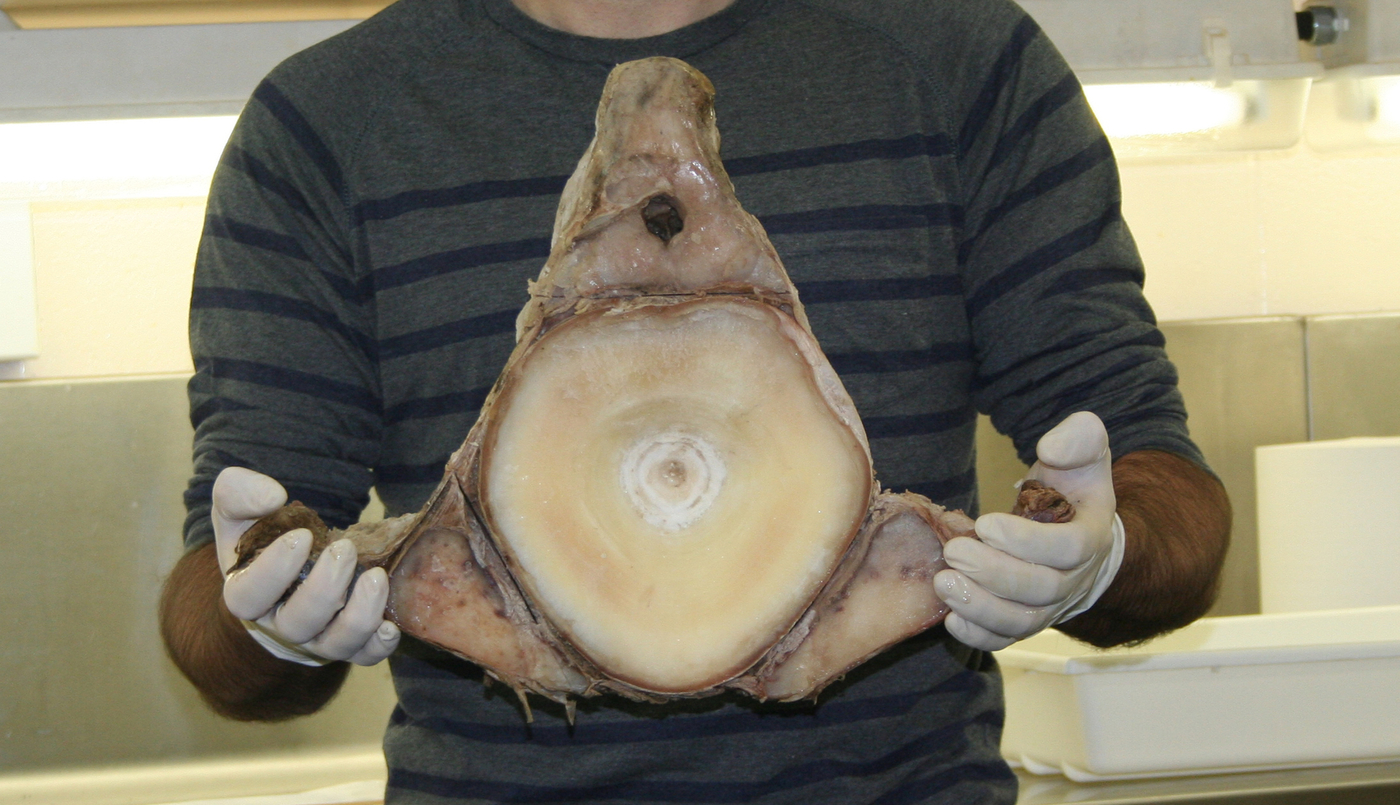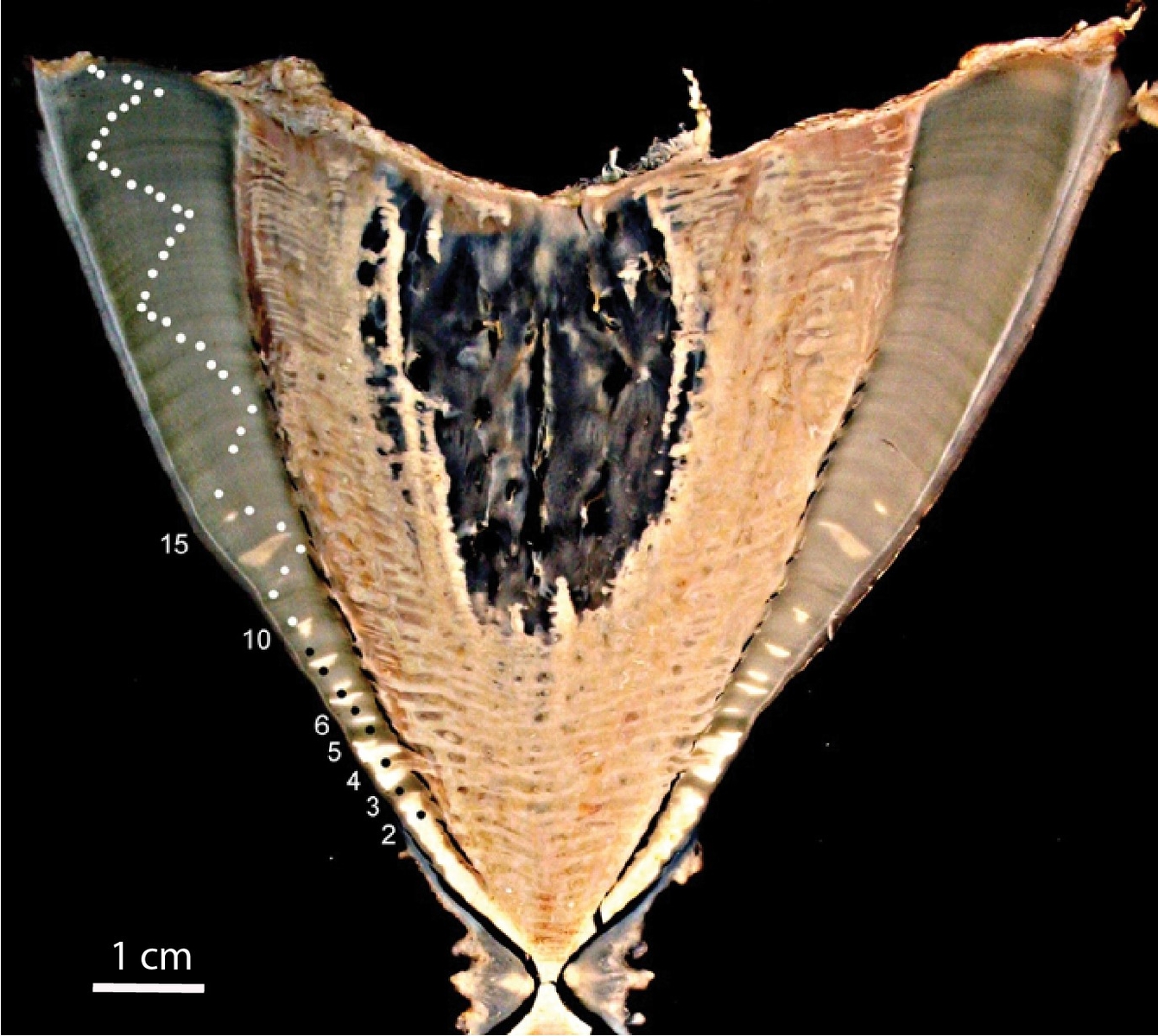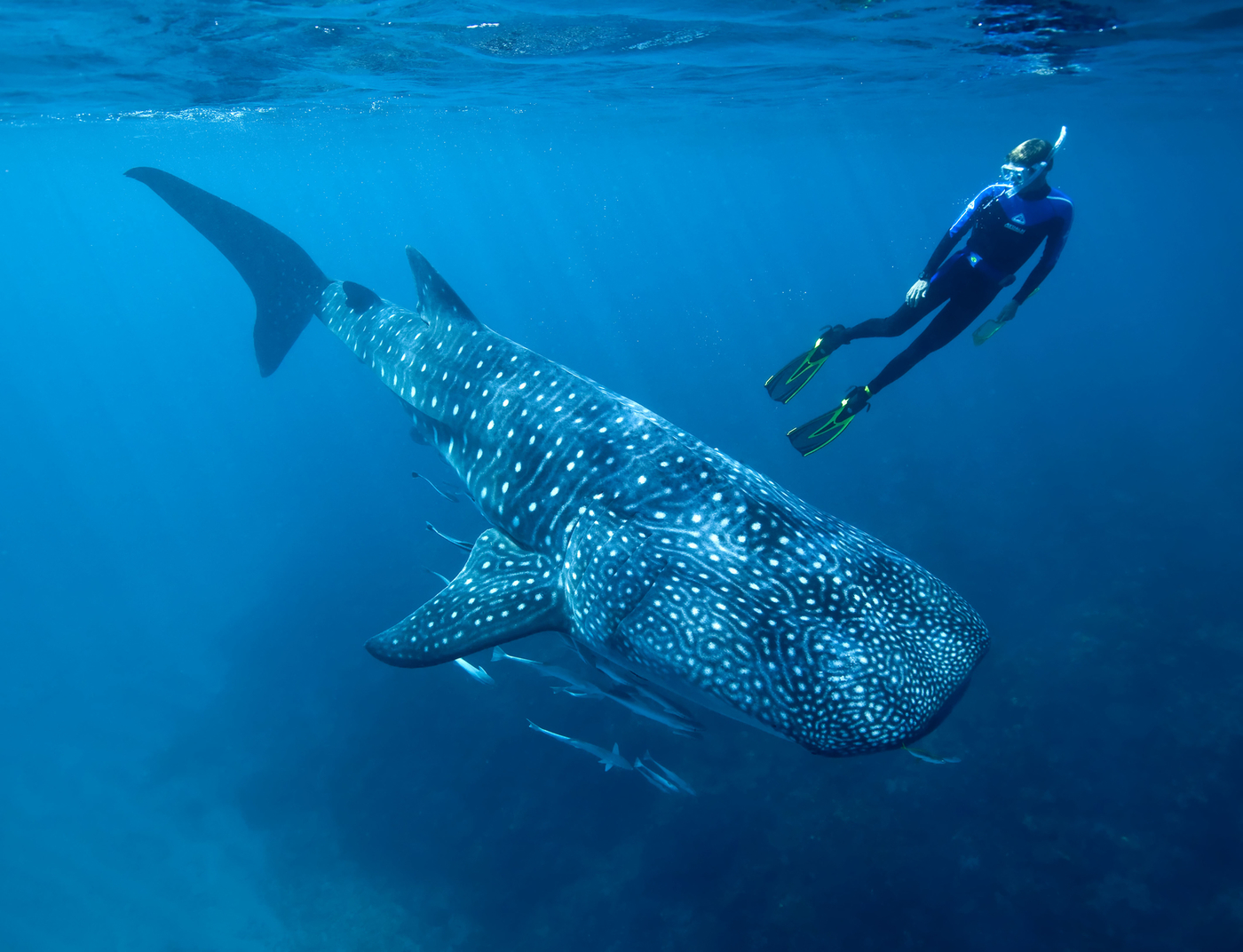An international group of scientists, including one from the University of Iceland, has for the first time correctly determined the age of whale sharks. It was atomic bomb tests conducted during the Cold War that played a surprising part in the discovery which will hopefully help ensure the survival of the species, now classified as endangered.
The discovery is published in the journal Frontiers in Marine Science, and among the authors is Steven Campana, professor at the University of Iceland Faculty of Life and Environmental Sciences.
Measuring the age of whale sharks (Rhincodon typus) has been difficult because, like all sharks and rays, they lack bony structures called otoliths that are used to assess the age of other fish.
Whale shark vertebrae feature distinct growth bands – a little like the rings of a tree trunk – and it was known that these increased in number as the animal grew older. However, some studies suggested that a new ring was formed every year, while others concluded that it happened every six months.
To resolve the question, a team of researchers led by Joyce Ong from Rutgers University in New Jersey, USA, Steven Campana from the University of Iceland, and Mark Meekan from the Australian Institute of Marine Science in Perth, Western Australia, turned to the radioactive legacy of the Cold War’s nuclear arms race.
Radiocarbon plays a key-part in the dating approach
"Sharks have been a passion of mine my entire life, but my interest really took off when I became head of the Canadian Shark Research Laboratory many years ago," says Steven who is among the most prestigious scientists in the world in the field of sharks and the age determination of fish species, including Icelandic fishes. He has been a professor at the University of Iceland's Faculty of Life and Environmental Sciences for the last five years. "Although my research at the University of Iceland over the past 5 years has focused more on Icelandic fish species like cod, I continue my international research on sharks and shark populations, in particular new methods for tracking them electronically and for determining how old they are. One of the methods that we developed years ago was to take advantage of radioactive remnants of Cold War atomic bomb testing that exist at extremely low levels everywhere in the world, and use them to confirm ages of sharks and other fishes," says Steven.

The vertebra of the whale shark is no small matter and feature distinct growth bands, a little like the rings of a tree trunk.
The method in question is based on a special kind of carbon, or an isotope called carbon-14, or radiocarbon. The radioactive isotope can be found in nature, e.g. in ancient animal bones. Its rate of decay is often used by archaeologists and historians to date ancient bones and artefacts.
During the 1950s and 1960s, the USA, the USSR, the UK, France and China conducted tests of nuclear weapons. Many of these were explosions detonated several kilometres in the air. One powerful result of the blasts was the temporary atmospheric doubling of the carbon-14 isotope. Fallout from the Cold War tests saturated first the air, and then the oceans. The isotope gradually moved through food webs into every living thing on the planet, producing an elevated carbon-14 label, or signature, which still persists.
Steven is among the most prestigious scientists in the world in the field of sharks and the age determination of fish species, including Icelandic fishes. He has been a professor at the University of Iceland's Faculty of Life and Environmental Sciences for the last five years. "Although my research at the University of Iceland over the past 5 years has focused more on Icelandic fish species like cod, I continue my international research on sharks and shark populations, in particular new methods for tracking them electronically and for determining how old they are," says Steven.

Sharks become very old
With this in mind, Steven and his colleagues developed a method using bomb radiocarbon data to compare the radioisotope levels in successive growth rings in fish; thus determining their age. "We have successfully applied our method to so many fish and shark species, that many scientists have approached us to work with them on their study species. That was the case with the whale shark work," explains Steven.
By studying the growth rings of two stranded, dead whale sharks landed in Pakistan and Taiwan, Steven and his colleagues managed to confirm that one growth ring was definitely deposited every year. Thus the age of the animals could be determined. One of the specimens was conclusively established as 50 years old at death – the first time such an age has been unambiguously verified. "Other species that we have studied include the great white shark, which we found lives to at least 66 years, porbeagles which live to 70 years, and even some clams, which live up to 200 years," adds Steven.

A cross section of a whale shark vertebra from Pakistan showing 50 growth rings showing that the animal was 50 years old. IMAGE/Paul Fanning
The study supports protective plans for whale sharks
The group emphasizes in the article the importance of this discovery, and points out that if you over- or under-estimate growth rates you will inevitably end up with a management strategy that does not work, and you will see the population crash. “Although our understanding of the movements, behaviour, connectivity and distribution of whale sharks have improved dramatically over the last 10 years, basic life history traits such as age, longevity and mortality remain largely unknown. “Our study shows that adult sharks can indeed attain great age and that long lifespans are probably a feature of the species. Now we have another piece of the jigsaw added," says Mark Meekan, from the Australian Institute of Marine Science in Perth, Western Australia.
"Many shark species, including the whale shark, are at very low population numbers, and are at serious conservation risk. Efforts to rebuild the population require knowledge of how long they live, and how fast they grow. Understandably, slow-growing sharks and fishes are slower to replace themselves than faster-growing species. However, determining the age of many shark and fish species is not necessarily straight forward, hence the value of the bomb-dating approach. Over the last 20 years, we have realized that past interpretations of many shark species as fast-growing and short-lived were grossly wrong, which helps explain why so many are in danger now. The research is contributing in correct growth and replenishment rates to international conservation efforts to rebuild shark populations,” says Steven on the significance of the research.




